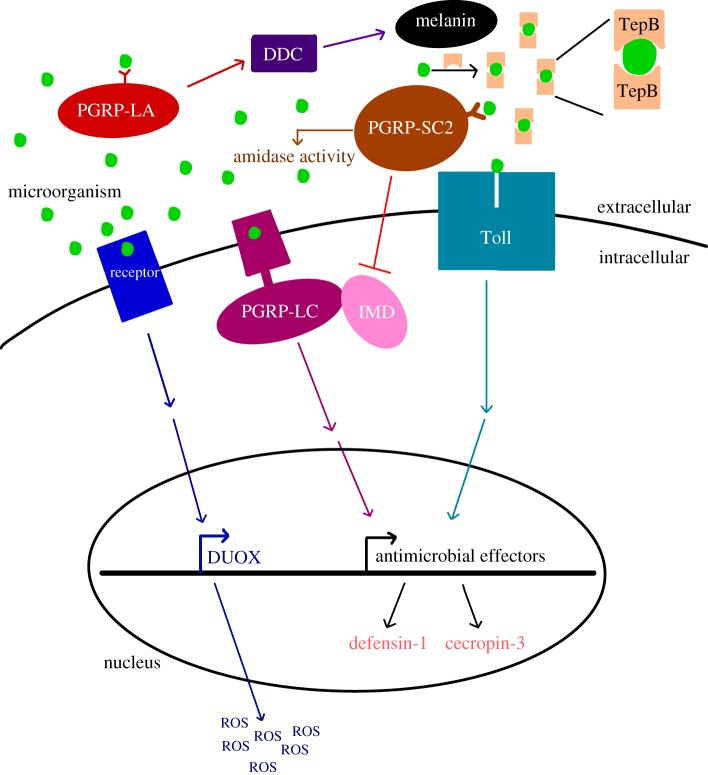Figure 1.
The proposed functional roles of T. castaneum immune genes quantified in this study. Peptidoglycan recognition proteins homologues (e.g. PGRP-LC and PGRP-LA) are thought to recognize parasites and stimulate signalling cascades that result in the production of antimicrobial effectors. The immune factors in this study are involved in the melanization pathway (DDC), production of reactive oxygen species (DUOX), opsonization by phagocytes (TepB) and degradation of microbial peptidoglycan via amidase activity (PGRP-SC2). The expression of antimicrobial peptides defensin-1 and cecropin-3 provide read-outs on the activation of Toll and IMD pathways. (Online version in colour.)

